Abstract
This paper examines behavioral changes in natural populations of wildlife associated with pollution. Although some changes such as lack of nest attentiveness and decreased nest defense have been noted, the results have not been consistent and have been difficult to relate to specific pollutants. Experimental studies involving lead, mercury, and organochlorine and organophosphate insecticides are described. Although changes in behavior have been observed, they are generally more difficult to quantify and are less reproducible than biochemical changes. To date, there is no clear evidence in wildlife that behavioral changes caused by pollutants are a serious threat to populations.
Full text
PDF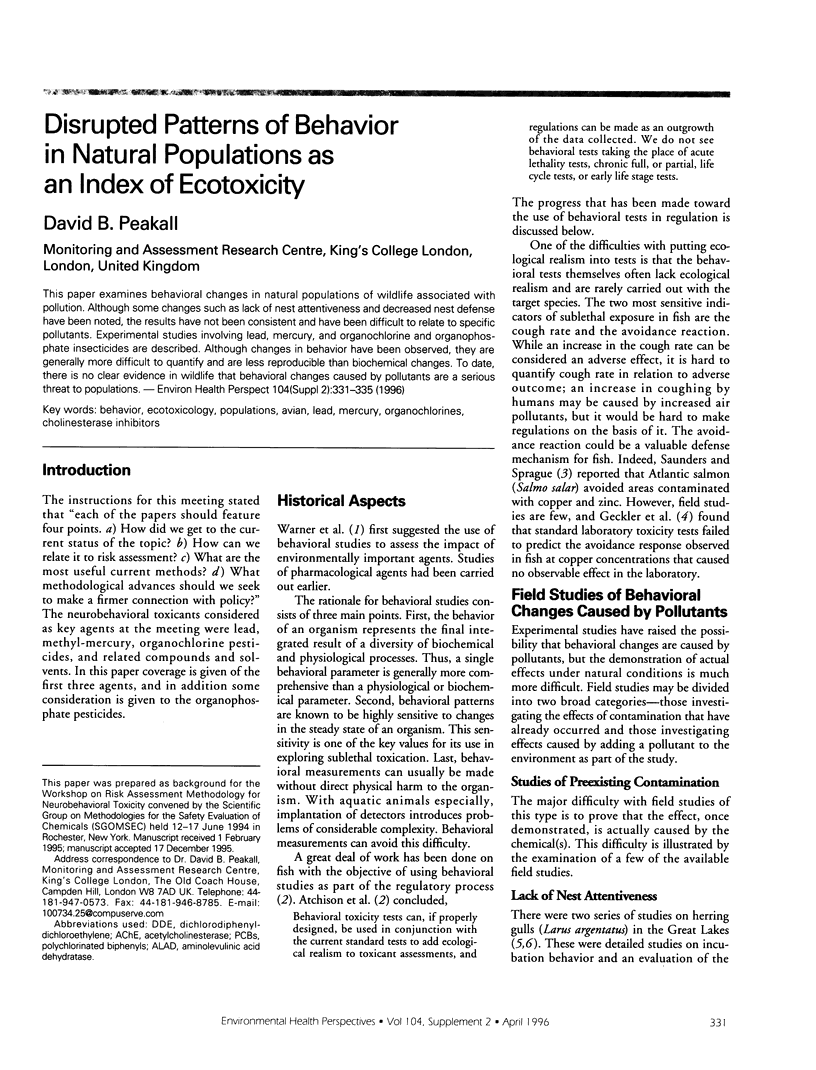
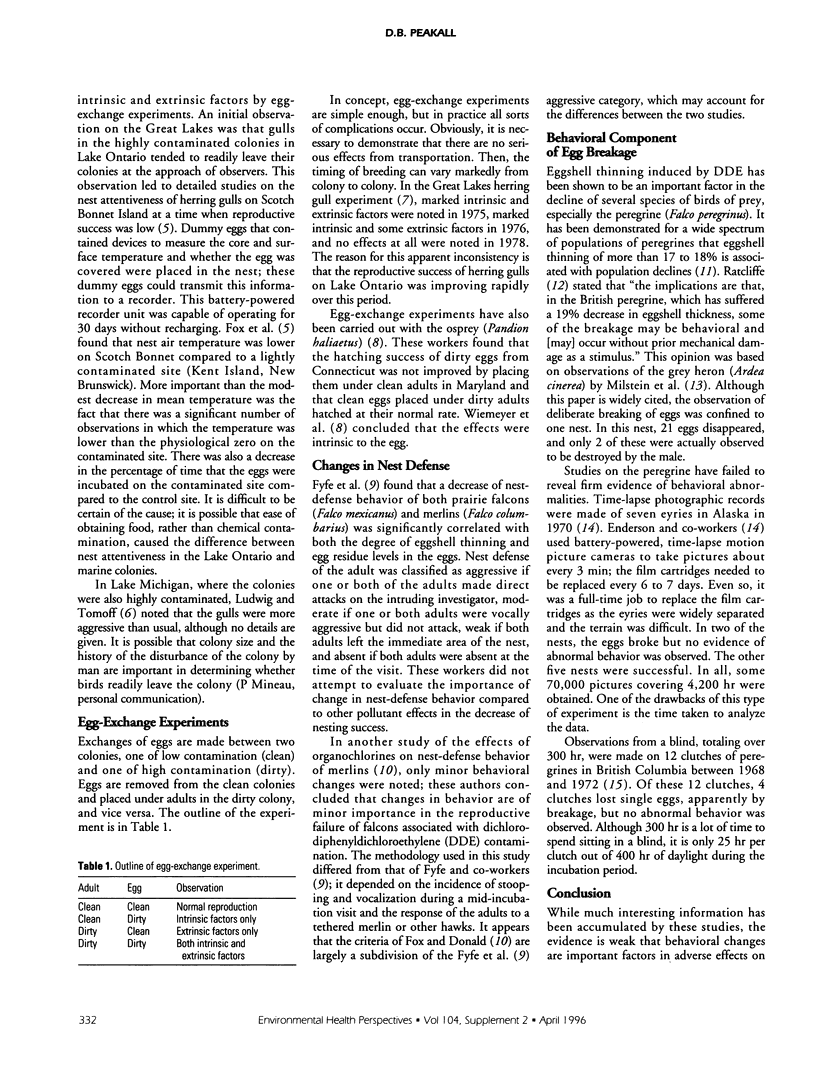
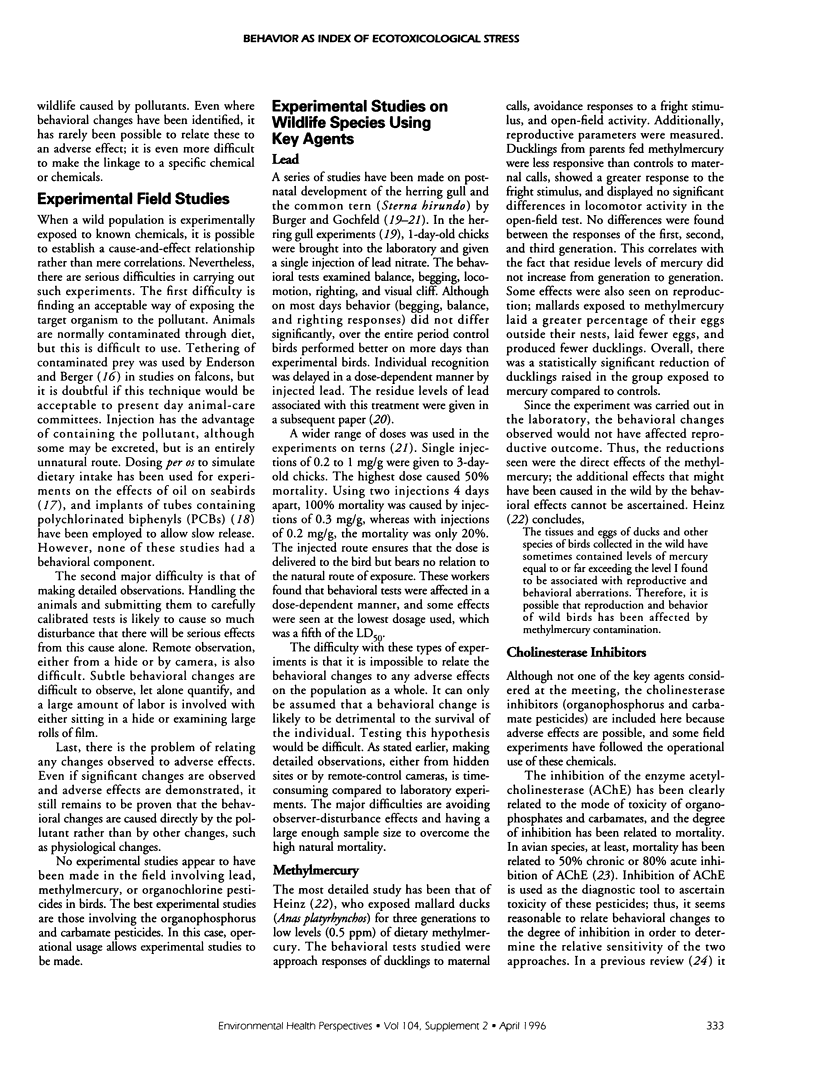
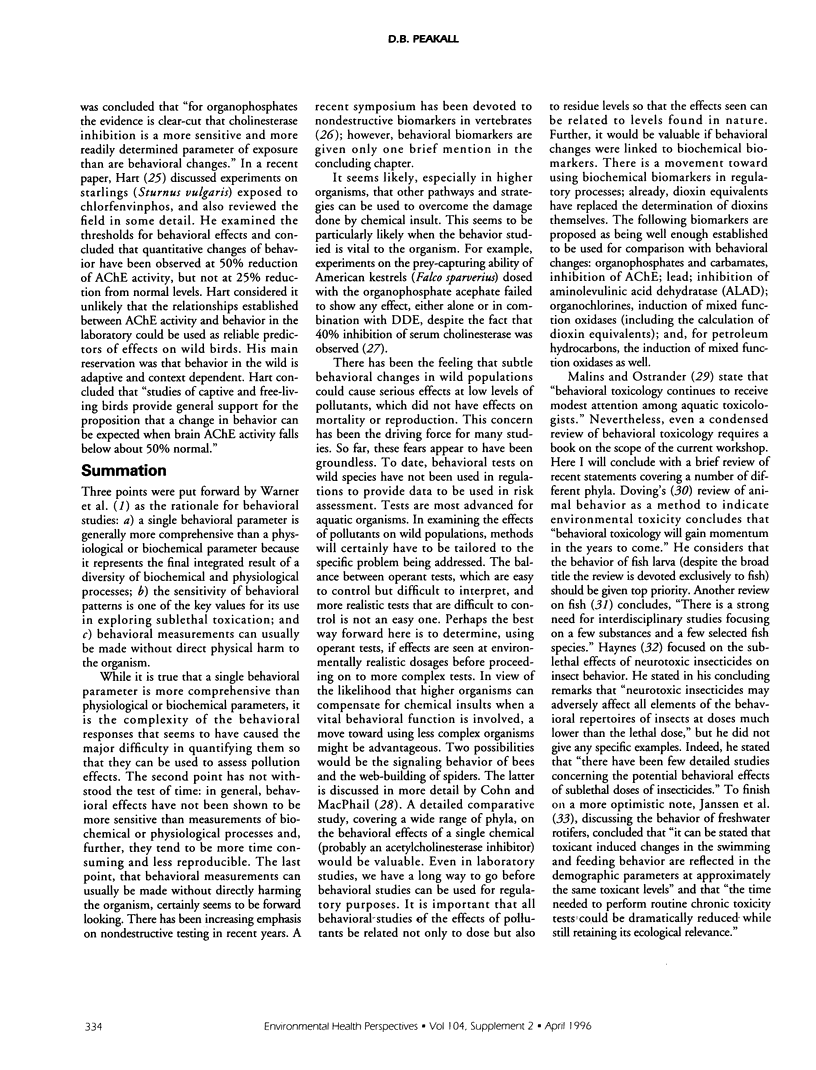
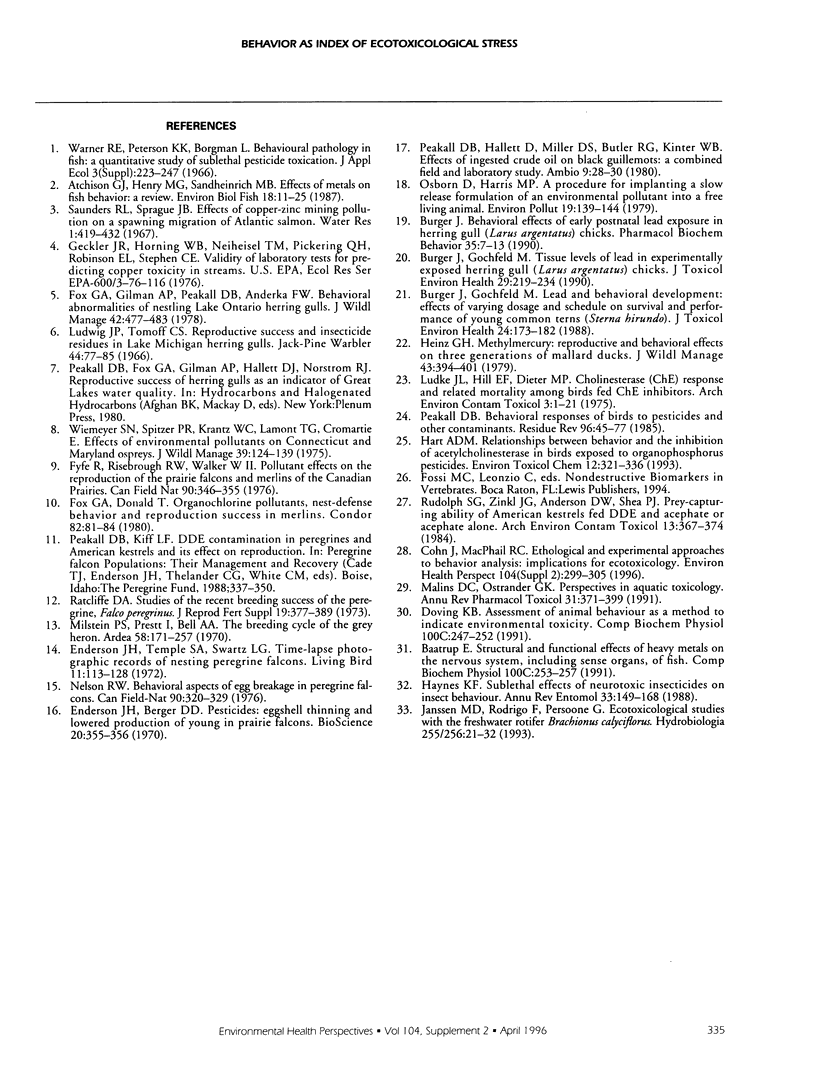
Selected References
These references are in PubMed. This may not be the complete list of references from this article.
- Baatrup E. Structural and functional effects of heavy metals on the nervous system, including sense organs, of fish. Comp Biochem Physiol C. 1991;100(1-2):253–257. doi: 10.1016/0742-8413(91)90163-n. [DOI] [PubMed] [Google Scholar]
- Burger J. Behavioral effects of early postnatal lead exposure in herring gull (Larus argentatus) chicks. Pharmacol Biochem Behav. 1990 Jan;35(1):7–13. doi: 10.1016/0091-3057(90)90196-o. [DOI] [PubMed] [Google Scholar]
- Burger J., Gochfeld M. Lead and behavioral development: effects of varying dosage and schedule on survival and performance of young common terns (Sterna hirundo). J Toxicol Environ Health. 1988;24(2):173–182. doi: 10.1080/15287398809531151. [DOI] [PubMed] [Google Scholar]
- Burger J., Gochfeld M. Tissue levels of lead in experimentally exposed herring gull (Larus argentatus) chicks. J Toxicol Environ Health. 1990;29(2):219–233. doi: 10.1080/15287399009531385. [DOI] [PubMed] [Google Scholar]
- Cohn J., MacPhail R. C. Ethological and experimental approaches to behavior analysis: implications for ecotoxicology. Environ Health Perspect. 1996 Apr;104 (Suppl 2):299–305. doi: 10.1289/ehp.96104s2299. [DOI] [PMC free article] [PubMed] [Google Scholar]
- Døving K. B. Assessment of animal behaviour as a method to indicate environmental toxicity. Comp Biochem Physiol C. 1991;100(1-2):247–252. doi: 10.1016/0742-8413(91)90162-m. [DOI] [PubMed] [Google Scholar]
- Haynes K. F. Sublethal effects of neurotoxic insecticides on insect behavior. Annu Rev Entomol. 1988;33:149–168. doi: 10.1146/annurev.en.33.010188.001053. [DOI] [PubMed] [Google Scholar]
- Ludke J. L., Hill E. F., Dieter M. P. Cholinesterase (ChE) response and related mortality among birds fed ChE inhibitors. Arch Environ Contam Toxicol. 1975;3(1):1–21. doi: 10.1007/BF02221128. [DOI] [PubMed] [Google Scholar]
- Malins D. C., Ostrander G. K. Perspectives in aquatic toxicology. Annu Rev Pharmacol Toxicol. 1991;31:371–399. doi: 10.1146/annurev.pa.31.040191.002103. [DOI] [PubMed] [Google Scholar]
- Ratcliffe D. A. Studies of the recent breeding success of the peregrine, Falco peregrinus. J Reprod Fertil Suppl. 1973 Dec;19:377–389. [PubMed] [Google Scholar]
- Rudolph S. G., Zinkl J. G., Anderson D. W., Shea P. J. Prey-capturing ability of American kestrels fed DDE and acephate or acephate alone. Arch Environ Contam Toxicol. 1984 May;13(3):367–372. doi: 10.1007/BF01055288. [DOI] [PubMed] [Google Scholar]


